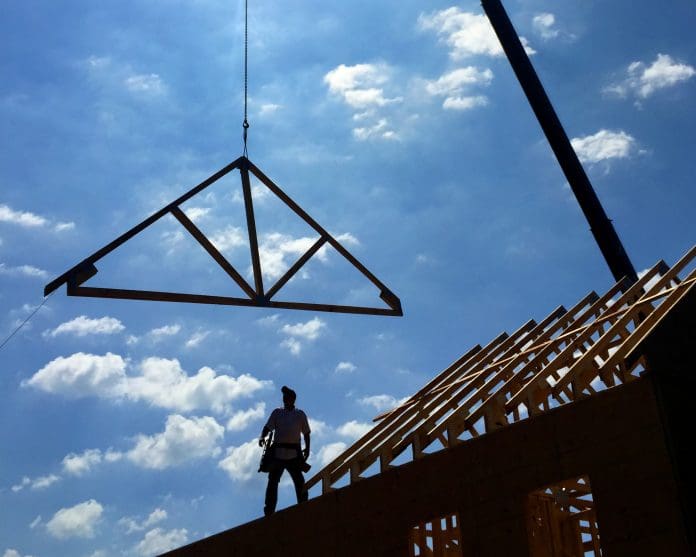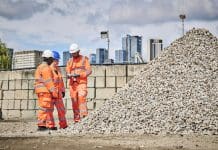Paul Cave, sales director at Koppers, discusses how a cross industry effort to grow understanding and awareness is needed to fully realise the aims of the Timber in Construction Roadmap
The Timber in Construction Roadmap released at the end of 2023 was welcomed with open arms by much of the construction industry – it’s a sign that the UK government is serious about closing the gap with international peers in timber construction.
But before developers jump into the deep end with timber, education is needed to ensure the specific requirements of different applications are truly understood.
Timber isn’t a one-size-fits-all solution – it falls into different use classes based on where it is in the project and what role it’s performing.
A lot of this is due to treatment; when timber is treated for use in construction, the treatment used is designed to protect against specific threats, which differ according to location and role.
Functional knowledge of these use classes needs to be scaled up alongside timber construction and eventually become second nature if we’re to make the most of this material.
Without this educational groundwork, we run the risk of ending up with timber structures that are not fit for purpose.
Understanding which Use Class timber is project appropriate
Applications for treated timber are generally split into three main use classes based on where they’ll be used: 2, for interior applications, 3 for exterior and 4 for exterior in-ground contact applications.
These classes determine the required treatment for adequate protection against decay. Here’s where each use class works best:
Use Class 2
Use Class 2 is primarily for applications where the wood is sheltered, covered or used indoors, above ground, and within the envelope of a building.
This wood is still at risk of wetting, but that risk comes from exposure during construction, and later on from internal sources such as burst pipes. Use Class 2 combines multiple end use timbers such as roof timbers, tiling battens, external and internal wall timbers, and ground floor joists.
Use Class 3
Use Class 3 encompasses treated timber designated for external applications where frequent moisture exposure occurs without direct ground contact.
This category is critical, especially considering it represents the largest sector for treated timber within the UK market today.
It includes a wide array of components where the risk of failure necessitates stringent treatment protocols, such as deck boards, elements of above-ground fencing, structural beams and joists, balcony structures, exterior cladding, bargeboards, and soffits.
Adhering to the highest standards of timber treatment, as outlined in the UK’s authoritative guidelines on wood preservation, ensures these components can withstand the challenging conditions they are subjected to. This not only extends the lifespan of the timber but also safeguards the structural integrity and reliability of the installations.
Given its widespread use and the critical nature of its applications, ensuring Use Class 3 timber is treated according to these guidelines is paramount for durability, safety, and performance in a variety of outdoor settings.
Use Class 4
Finally, Use Class 4 designates the highest category of treated timber, intended for scenarios where the wood is either in direct contact with the ground, consistently exposed to freshwater, or used for external structural support.
This classification encompasses a range of applications such as posts for fences and decks, the foundational structures of decks, walls that retain soil, garden beds raised above ground level, and structural components of bridges not submerged in water. According to BS8417, proper treatment of timber within Use Class 4 is paramount.
In these situations, improperly treated wood is at significant risk, with potentially severe implications. Ensuring the timber is treated appropriately for its intended use is essential for durability and structural integrity.
A cross-industry approach to education and awareness is essential
This is base level knowledge, and the industry needs to ensure that the right timber material is used in the right settings, but this won’t happen automatically.
Making resources, such as those created by the Wood Preservation Association, widely available is an important starting point, but they need to be supported by a push from industry stakeholders including timber suppliers, treaters, merchants, developers, and policymakers to quickly establish the guard rails for the scale-up of timber.
The Timber in Construction Roadmap highlights making the industry fluent both in timber construction and how it relates to embodied carbon a priority in the transition. It suggests several concrete measures to achieve this; stretching from promoting Design and Technology qualifications in schools and colleges to collating new and emerging CPD qualifications to allow the industry to keep pace with new developments.
There are also priority areas identified for industry–government collaboration, including closing operational skills gaps and quantifying where the workforce needs to be expanded.
This is to be headed by a multi-stakeholder industry forum designed to build an industry with a consistent base of knowledge and skills.
For industry, the emphasis is on mapping ‘routes to competency’ on relevant timber occupations, a long list that will inevitably grow as this material is adopted en masse.
Understanding the relevant use classes is just one step on this road to competency, but it will require input from across the sector to determine routes for every job role. These will be clearer for some than others, but the competency of fire risk assessors, fire engineers, building control offices, and insurance professionals is just as important an ingredient in widespread adoption.
The Timber in Construction Roadmap is the first step to the future
We needn’t look far for success stories. France’s Association for the Development of Buildings for Living in Wood (ADIVBois) is a multidisciplinary body made up of stakeholders from industry and government. The Association has commissioned studies into a range of best practices for timber construction, work that culminated in several medium- and high-rise ‘demonstrator buildings’ serving as examples of best practice for others in the industry.
The time is now for timber in UK construction, but its real positive impact will come when it is used at scale to dramatically reduce embodied carbon in the built environment. This will require universal buy-in, but also universal competence – we need to feel as competent building with timber as we do with concrete and steel.
Understanding use classes and being able to select the correct product for the job is a specific example, but one that will be replicated thousands of times across the industry. Timber comes with practically unlimited opportunity for the industry, but knowledge will be more than half the battle when it comes to seizing it.

Paul Cave
Koppers














